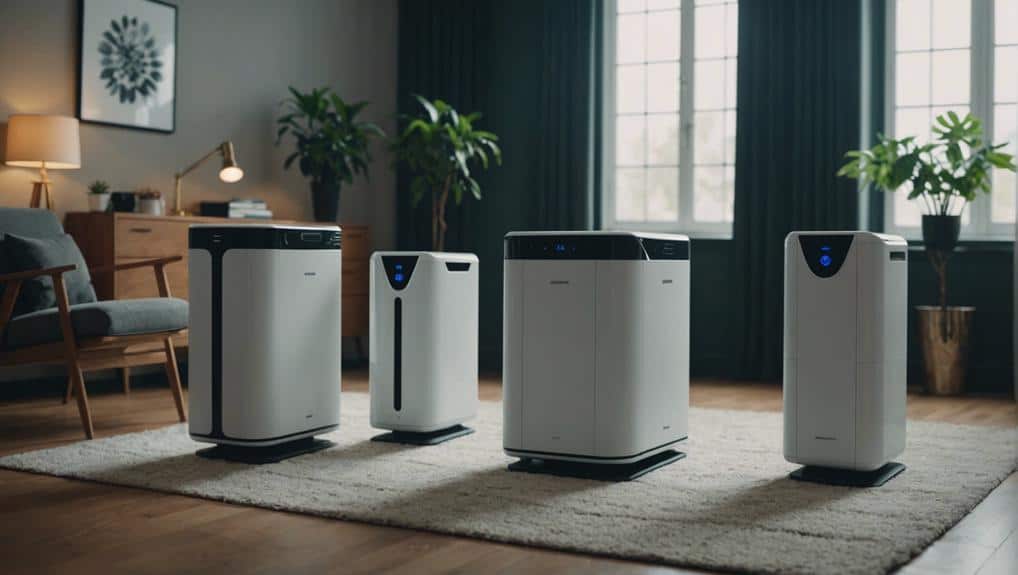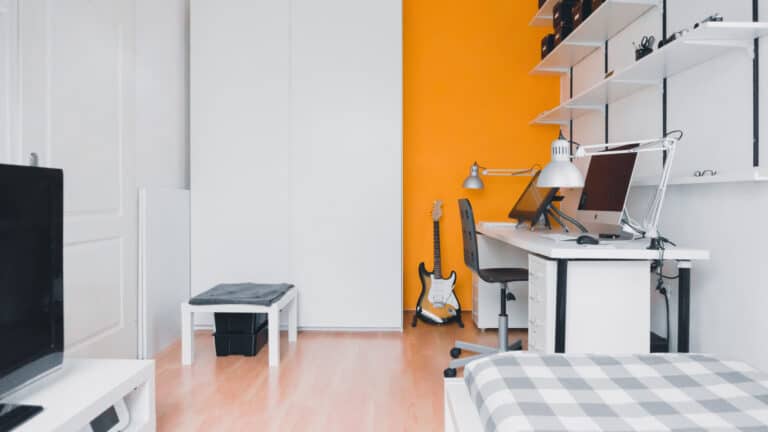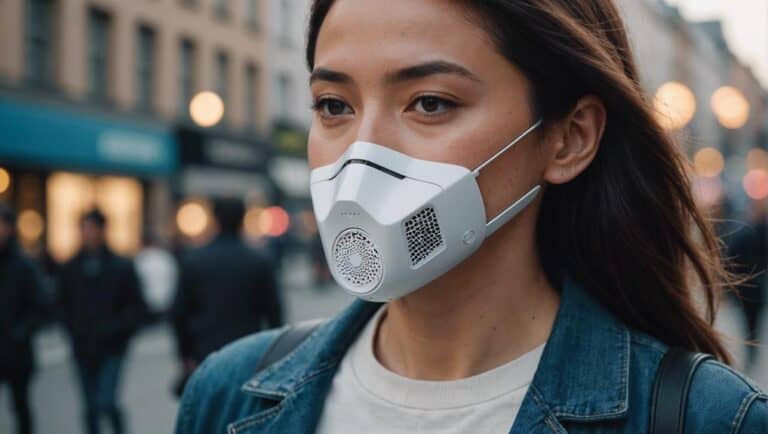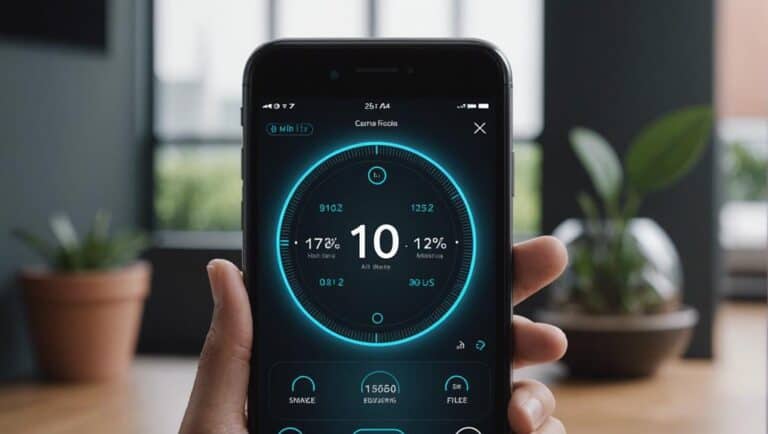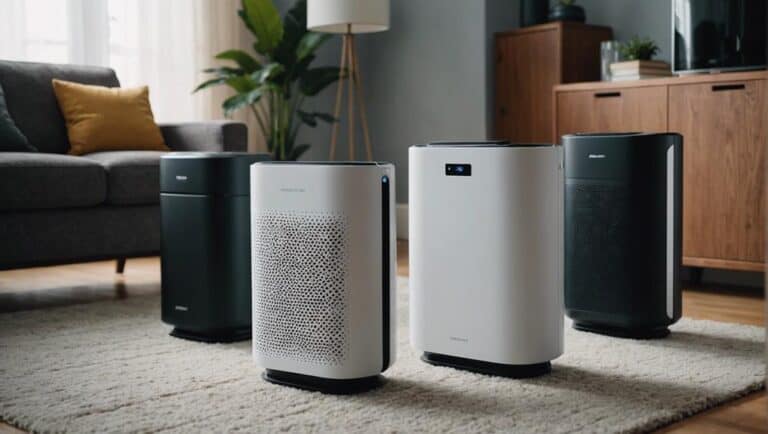How to Improve Indoor Air With These Top 10 Air Purifier Hacks
As we explore ways to enhance the quality of the air we breathe indoors, it becomes apparent that simple yet effective air purifier hacks can make a significant difference. From ensuring the right sizing and placement of purifiers to incorporating natural air-purifying elements, there are numerous strategies to contemplate.
Each hack plays an important role in transforming our indoor environment into a healthier space, but how these methods intertwine to create a harmonious air purification system is where the true magic lies.
Proper Sizing for Effective Purification
Selecting the right-sized air purifier is vital for ensuring the best air purification in indoor spaces. To achieve peak air quality improvement, it’s essential that the air purifier matches the square footage of the room it will be used in. An air purifier that’s too small for the space may struggle to effectively clean the air, resulting in subpar performance and leaving pollutants lingering.
Conversely, an oversized air purifier, while powerful, can consume more energy than necessary without providing superior air purification.
For efficient and effective air purification, it’s recommended to match the air purifier’s Clean Air Delivery Rate (CADR) to the size of the room. This ensures that the air purifier can handle the volume of air in the space, effectively removing pollutants and allergens.
Optimal Placement for Maximum Efficiency
To maximize the efficiency of an air purifier, strategic placement plays a key role in targeting specific contaminants and ensuring proper air circulation. When considering the best placement for maximum efficiency in air purification, keep in mind the following tips:
- Source Proximity: Place the air purifier near the source of pollution, like a litter box or cooking area, to effectively target specific contaminants.
- Airflow Optimization: Guarantee there’s proper airflow around the air purifier by avoiding placing it against walls or furniture, maximizing air circulation.
- Central Positioning: Position the air purifier in the middle of the room to evenly distribute clean air throughout the space for thorough air purification.
- Unobstructed Intake: Avoid blocking the air purifier with curtains or large objects to allow for efficient intake and output of air, enhancing the purification process.
Regular Filter Replacement Schedule
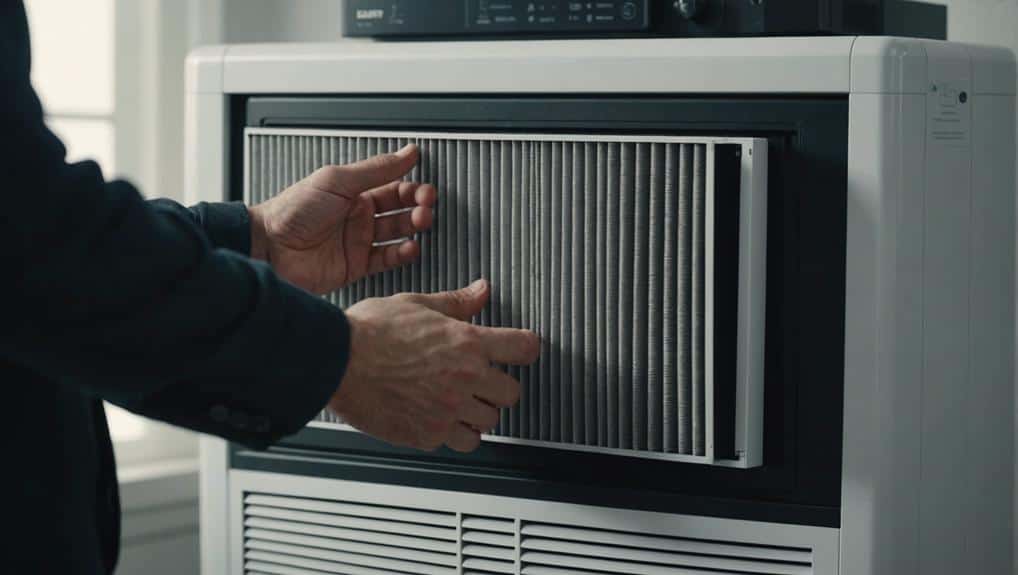
Regularly replacing air filters every 3 months is essential for maintaining ideal indoor air quality. This simple task guarantees that air purifiers can efficiently remove dust, allergens, and other contaminants from the air.
Following a manufacturer’s recommended filter replacement schedule is a cost-effective way to secure the effectiveness of your air purifier.
Filter Replacement Importance
Maintaining a consistent filter replacement schedule is crucial for ensuring peak indoor air quality and HVAC system efficiency. When it comes to air filters, here are some key points to keep in mind for top performance:
- Regular Replacement: Guarantee filters are changed according to manufacturer recommendations.
- Improved Air Quality: Fresh filters trap dust, pollen, and particles, keeping the air cleaner.
- Enhanced Efficiency: Clean filters allow for proper airflow, reducing strain on the system.
- Cost Savings: Prevent potential damage and lower energy consumption by staying on top of filter changes.
Timing and Frequency
For ideal indoor air quality, it’s essential to adhere to a consistent schedule for replacing air filters in HVAC systems. Air purifiers like HEPA filters should be changed annually to guarantee excellent air purification. Regularly replacing filters in HVAC systems every 3 months is vital as recommended by experts.
Additionally, vacuum cleaner filters should be checked and replaced every 3 to 6 months to efficiently remove dust. Neglecting the replacement of these filters can result in decreased air quality and an increase in airborne contaminants. By following a strict filter replacement schedule, you can ensure clean indoor air and prolong the lifespan of your air purification systems.
Cost-Effective Options
To guarantee cost-effective maintenance of indoor air quality, adhering to a consistent filter replacement schedule is paramount. When managing your HVAC system, consider the following tips:
- Set a reminder on your calendar or phone for regular filter changes.
- Purchase filters in bulk to save money in the long run.
- Keep track of the last replacement date to make timely changes.
- Check filters monthly for any signs of dirt or clogging.
Utilize Multiple Purifiers Strategically
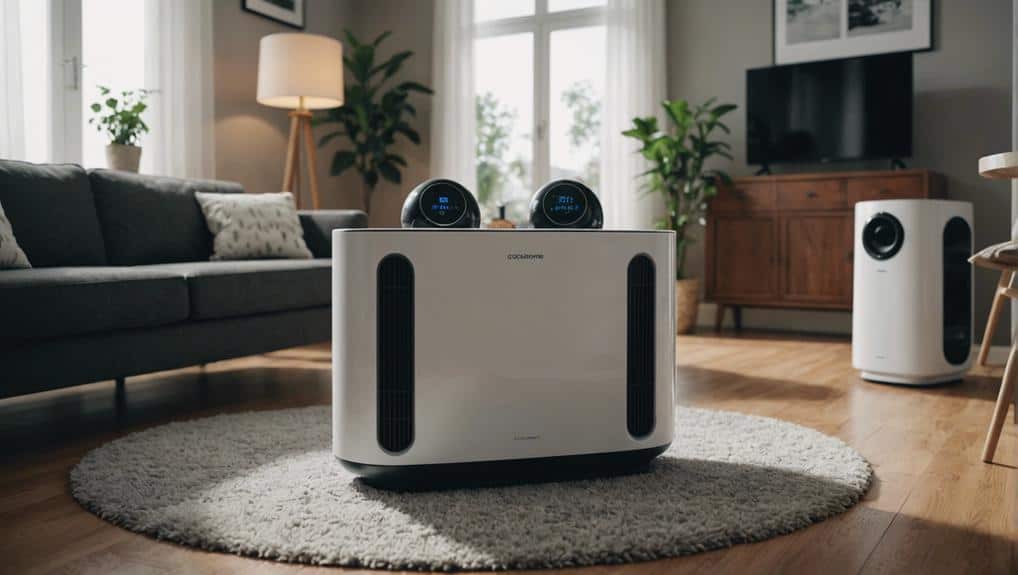
When it comes to optimizing indoor air quality, strategically placing multiple air purifiers can make a significant difference.
By considering purifier placement tips, airflow dynamics, and adapting to room sizes, we can effectively target pollutants in various areas of our home.
This approach guarantees consistent and thorough air purification, ultimately leading to better indoor air quality for all of us.
Purifier Placement Tips
Placing air purifiers strategically in multiple rooms optimizes air purification throughout the home, targeting specific air quality concerns near sources of pollutants like kitchens or pet areas.
When considering purifier placement, keep these tips in mind:
- Position purifiers in high traffic areas, such as living rooms and bedrooms, to reduce airborne contaminants.
- Place air purifiers near windows to capture outdoor pollutants and enhance indoor air quality.
- Target specific areas of concern by strategically utilizing portable air purifiers for flexibility.
- Consider situating purifiers in rooms where family members spend the most time to make sure they benefit from cleaner air.
Airflow Considerations
By strategically utilizing multiple air purifiers in different rooms, we can effectively enhance airflow and coverage throughout the home. Placing air purifiers strategically allows for targeted purification in specific areas with higher pollutant levels. Consider placing purifiers in key locations like bedrooms and living rooms to optimize air purification efficiency. This strategic approach addresses varying air quality needs throughout the home, creating a holistic indoor air purification system.
| Air Purifier Placement | Benefits |
|---|---|
| Bedrooms | Targeted purification for better sleep quality |
| Living Rooms | Enhanced air quality for relaxation and socializing |
| Kitchen | Improved air circulation in a high-traffic area |
Room Size Adaptation
To enhance air purification efficiency in different room sizes, strategically utilizing multiple air purifiers is crucial. When adjusting air purifiers to room size, consider the following:
- Select air purifier size based on square footage for peak performance.
- Use multiple smaller purifiers strategically placed for more effective coverage.
- Larger rooms may need multiple purifiers or a high CADR unit for efficient purification.
- Place purifiers near pollutant sources like kitchens or pet areas for targeted purification zones.
Enhance Purification With Indoor Plants
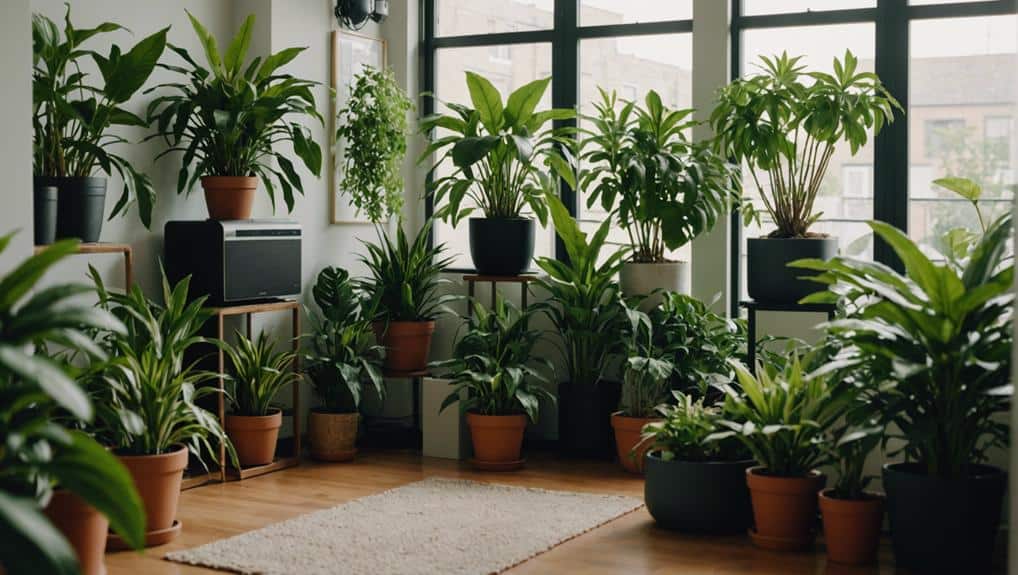
Indoor plants play a crucial role in enhancing air purification within enclosed spaces by effectively converting harmful chemicals into oxygen, thereby improving overall indoor air quality. Plants such as Sansevieria trifasciata, peace lilies, and ZZ plants are known for their ability to detoxify the air, while Areca palms, lady palms, and rubber plants are recommended by experts for their air purification properties.
By increasing the number and variety of indoor plants, you can greatly reduce pollutants and boost oxygen levels indoors. This natural method isn’t only cost-effective but also provides numerous health benefits.
Indoor plants require minimal maintenance and can thrive in various indoor environments, making them an accessible option for improving indoor air quality.
Consider incorporating these air-purifying plants into your indoor spaces to create a healthier and more invigorating environment.
Control Indoor Humidity Levels
Monitoring indoor humidity levels is essential for maintaining a healthy indoor environment.
We can use dehumidifiers effectively to reduce moisture in the air, preventing mold growth and musty odors.
Controlling humidity not only improves indoor air quality but also helps in safeguarding our homes from potential structural damage.
Monitor Humidity Levels
Maintaining indoor humidity levels within the recommended range of 30-50% is essential for optimizing air quality and promoting a healthy living environment.
To effectively monitor humidity levels, consider these key actions:
- Use a hygrometer to track humidity levels accurately.
- Adjust ventilation to regulate moisture in the air.
- Keep an eye out for condensation on windows, which indicates high humidity.
- Implement moisture-absorbing materials like silica gel in damp areas.
Use Dehumidifiers Effectively
To effectively manage indoor humidity levels and improve air quality, utilizing dehumidifiers is essential. Dehumidifiers play a significant role in controlling indoor air pollution by preventing mold and mildew growth. Maintaining indoor humidity between 30-50% is vital for excellent air quality, as high humidity levels can increase dust mites and allergens in the air.
Prevent Mold Growth
Maintaining indoor humidity levels below 60% is essential in preventing mold growth within the home. To control indoor humidity and keep mold at bay, consider these tips:
- Use dehumidifiers in damp areas like basements and bathrooms to reduce moisture buildup.
- Ventilate high-humidity areas to prevent condensation and mold formation.
- Repair leaks promptly to prevent water accumulation and subsequent mold development.
- Regularly clean and dry surfaces prone to moisture to discourage mold growth.
Minimize Sources of Indoor Pollution
Choosing household products with natural ingredients is an important strategy in minimizing sources of indoor pollution. By opting for non-toxic cleaning products and fragrance-free sprays, we can reduce harmful chemical exposure and prevent the introduction of toxic compounds into our living spaces.
Reading ingredient labels on household items is essential for identifying and avoiding harmful chemicals that contribute to indoor air pollution. Making conscious decisions to select products with natural ingredients helps in maintaining a healthier indoor environment.
These actions not only minimize sources of indoor pollution but also greatly improve indoor air quality. Taking steps to reduce indoor pollution benefits our overall well-being and creates a more sustainable and pleasant living atmosphere.
Our commitment to choosing products wisely plays a fundamental role in enhancing the quality of the air we breathe and ensuring a safer home environment for ourselves and our loved ones.
Avoid Synthetic Air Fresheners

Minimizing sources of indoor pollution involves steering clear of synthetic air fresheners that can release harmful chemicals into the air. These chemicals, such as formaldehyde, benzene, and phthalates, contribute to indoor air pollution, impacting indoor air quality and potentially exacerbating respiratory conditions.
Opting for natural alternatives like essential oils, baking soda, or vinegar can effectively freshen indoor air without introducing pollutants.
Synthetic air fresheners may mask odors temporarily, but they don’t address the root cause of the smell, potentially leading to a cycle of continuous masking. By avoiding synthetic air fresheners, we can take control of our indoor environment, ensuring a healthier space for ourselves and our loved ones.
- Choose natural alternatives like essential oils, baking soda, or vinegar.
- Opt for air purifiers with activated carbon filters to help eliminate odors.
- Open windows regularly to allow fresh air to circulate and reduce indoor pollutants.
- Consider using houseplants known for their air-purifying properties to improve indoor air quality.
Implement Stove Ventilation Best Practices
To enhance indoor air quality and reduce pollutants, implementing effective stove ventilation practices is vital. Using stove ventilation while cooking helps to remove cooking-related contaminants, preventing the buildup of harmful gases like carbon monoxide in indoor air.
Installing ventilation hoods or range hoods above stoves can effectively capture and eliminate cooking odors and pollutants. Running stove ventilation fans during and after cooking is essential for improving indoor air quality by getting rid of cooking byproducts.
By ensuring proper stove ventilation, you can minimize the health risks associated with inhaling cooking fumes and pollutants. Remember, maintaining good airflow in your kitchen is key to keeping the air clean and healthy.
Maintain a Clean Living Environment
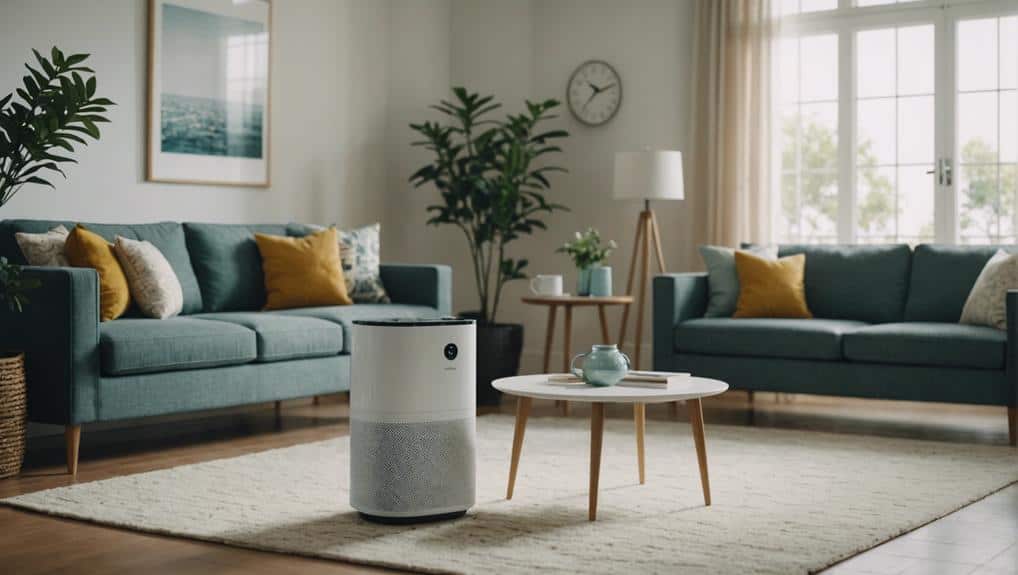
Regularly cleaning and dusting surfaces is important for reducing indoor air pollutants and maintaining a healthy living environment. To guarantee a clean living space, we recommend the following practices:
- Vacuum and dust surfaces frequently to minimize dust and dander accumulation, ultimately improving indoor air quality.
- Clean carpets and rugs regularly as they trap air pollutants that can negatively impact the air you breathe.
- Consider investing in carpet tiles for easier and more effective carpet cleaning, aiding in the maintenance of a cleaner environment.
- Be aware that dust and allergens often collect in carpets, affecting indoor air quality; therefore, regular cleaning is essential.
Conclusion
To conclude, by incorporating these top 10 air purifier hacks, we can greatly enhance the quality of our indoor air. From proper sizing and placement of purifiers to utilizing plants for natural purification, each step plays a crucial role in creating a healthier living environment.
By consistently following these strategies and maintaining a clean living space, we can breathe easier and enjoy a more comfortable atmosphere indoors. Let’s prioritize our indoor air quality for a better overall well-being.
